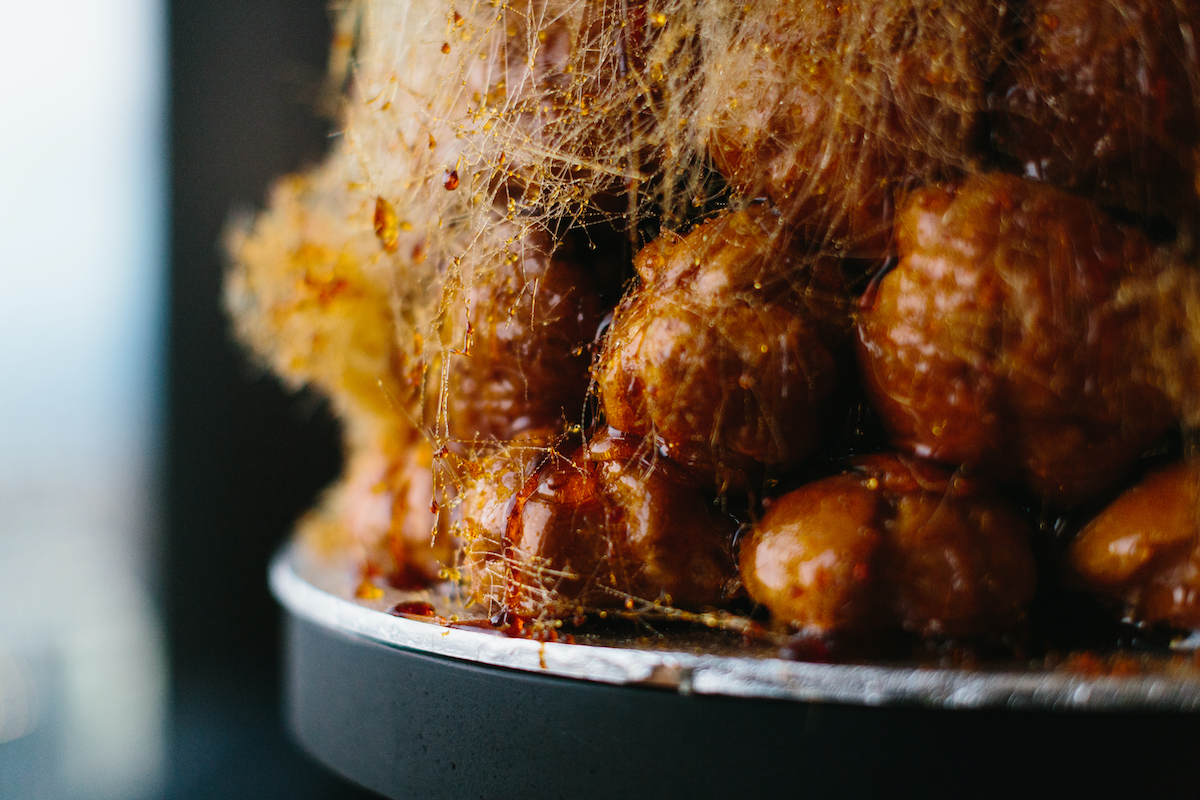Failing at croquembouche helped me overcome bullying

When I was a freshman in high school, I was nearly pushed down the stairs, startled by pop-up jocks from behind doors and called homophobic slurs. The day before Christmas break was one of the best school days of the year for most kids, second only to the last day of school. Every teacher would show movies while hungry teenagers ate every holiday treat in sight. I, however, couldn’t get out of bed. Just the thought of those checkered halls made me sick. So, I told my mom I wasn’t feeling well, faked a cough for good measure, crept back into bed, my duvet wrapped around me like a boa constrictor, and cried. I had never felt like I entirely fit in, but I had never been bullied like this. So, I tried to think of things that made me happy, like baking cookies with my mom and trying new recipes from my first cookbook, “Flour” by Joanne Chang.
Eventually, I got myself out of bed and scanned through my mom’s recent issue of Food Network magazine. I was enchanted by the colors and textures of weeknight dinners and garnished cakes. I came across a 2-page spread about how to make a croquembouche. It looked at me like a pâtissier Uncle Sam, demanding me to put on an apron and go to war. I read about choux pastry, wet caramel, and how to wrap your pastry tower with spun sugar. I pictured a 7-foot version in the living room instead of my family’s Christmas tree and, without a second thought, gathered flour, sugar, butter, eggs, and vanilla. I tied my barely-worn “I want chocolate and I want it now” apron around my waist and got to work.
I started by carefully reading the magazine page and diligently measuring ingredients in little bowls, as if I was the host of a cooking show. I tilted my head as I whisked water and butter in a saucepan, pouring in flour through a parchment paper taco. I stirred the dough with Herculean effort, then lined up six brown eggs in the curve of the cutting board. I added the eggs too quickly and spooned gloopy mounds of pale gold batter onto baking sheets. My flour-flaked fingers pressed a timer as I squatted impatiently in front of the glowing box. I hoped that if I stared intensely enough, they would miraculously rise into golden ornaments, but just as they climbed, they began to fall.
Nevertheless, I carried on with the pastry cream, waiting impatiently for the eggs to thicken into custard. I cooked sugar and water over a bright red coil and watched my first caramel begin to bubble. It felt like it would never cook, so I tended to my burning choux amoebas. Still, I carried on. I sloppily piped the cream into the cooled pastries with a cut-corner sandwich bag. I dipped them in the hardening brown goo with the scalding pan resting on a flowery potholder, one at a time, singeing my fingertips and waving my hand in pain. Soon, I had a homely 3-foot tree on the dining table, just as the sun started to set. The kitchen was covered in flour, batter, egg shells, and caramel drips, and I studied my creation like a masterpiece. Normally, I would have cared that my croquembouche didn’t resemble the perfect magazine picture, but I felt proud of the work I had done.
When my parents came home, their eyes widened at the chaos in the kitchen, and then calmed when they saw me smiling. Their wilting, exhausted child had been brought back to life. None of us cared that the caramel was burnt, or that the pastry cream gushed out of the profiteroles like raw egg yolks. We wallowed in the joy and nearly fell over trying to pull them apart.
While I wasn’t physically sick that day, staying home was what I needed. Even for just one day, the weight of adolescence fell from my shoulders. I went hours without thinking of what path to take at the bell ring to avoid being jumped. And, for the first time, I imagined a life beyond being a 14-year-old outcast. My problems didn’t magically disappear after conquering the croquembouche, but it taught me that I’m perfectly capable of climbing mountains, no matter how crooked or burnt they may be.

